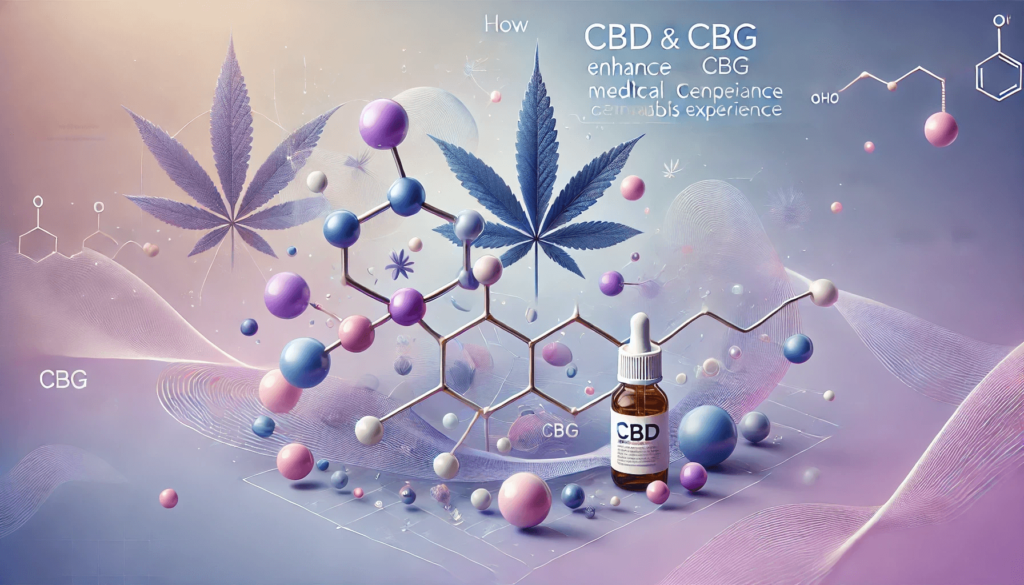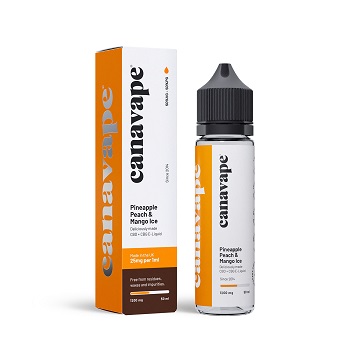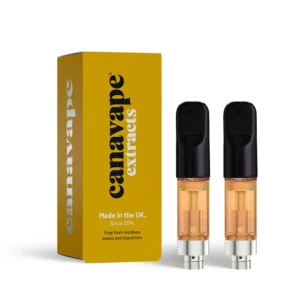
The world of medical cannabis is evolving, with CBD (cannabidiol) and CBG (cannabigerol) emerging as key players in enhancing the therapeutic experience. As more people explore the potential benefits of integrating these cannabinoids with traditional THC products, a new realm of possibilities unfolds. This synergy may offer a more balanced and personalized approach to managing various health conditions, from anxiety to chronic pain. In this piece, we will delve into how CBD and CBG work alongside THC, the science behind their interactions, and how they can be used to optimize your medical cannabis journey. Discover how these cannabinoids can potentially transform your experience and provide a more tailored approach to wellness.
Cannabinoids are chemical compounds found in the cannabis plant, each having distinct effects. THC (tetrahydrocannabinol) is well-known for its psychoactive properties, giving users the “high” commonly associated with cannabis. Meanwhile, CBD is non-psychoactive and is praised for its potential therapeutic benefits, such as reducing inflammation and alleviating anxiety. CBG, though less prevalent, is gaining attention for its potential medicinal properties, including antibacterial and anti-inflammatory effects. Together, these cannabinoids interact with the body’s endocannabinoid system (ECS), which plays a crucial role in regulating vital functions like mood, appetite, and pain sensation. By understanding these basic elements, users can better appreciate how combining cannabinoids might enhance their medical cannabis experience. This blending can lead to more personalized and effective treatments tailored to individual health needs, opening up new possibilities in holistic wellness.

Combining CBD and CBG with medical cannabis, primarily THC – can offer a more comprehensive therapeutic experience. Many users seek this combination to balance THC’s psychoactive effects with the calming, non-intoxicating qualities of CBD and CBG. This balance can be particularly beneficial for patients managing anxiety, chronic pain, or other co nditions where THC’s intensity might be overwhelming. Additionally, CBD and CBG may enhance the therapeutic potential of THC by modulating its effects, possibly reducing unwanted side effects like paranoia or increased heart rate. By integrating these cannabinoids, individuals can potentially achieve a more tailored and effective treatment plan. This synergy allows for a personalized approach to symptom management, addressing specific health concerns while minimizing drawbacks. As more research unfolds, the practice of combining cannabinoids continues to gain traction, offering promising avenues for those seeking a nuanced approach to cannabis-based therapies.
The synergy between CBD, CBG, and THC, often referred to as the “entourage effect,” suggests that these cannabinoids work better together than in isolation. This interaction can amplify the therapeutic effects, providing a more comprehensive approach to managing health conditions. For example, CBD is known for its potential to alleviate anxiety and inflammation, while CBG may offer neuroprotective benefits. When these cannabinoids are combined with THC, they may enhance pain relief and promote relaxation without the intense psychoactive experience. This harmonious blend can be particularly advantageous for those seeking symptom relief without the pronounced “high” of THC alone. Additionally, this synergy can mitigate some adverse effects of THC, such as paranoia or increased heart rate, offering a more balanced and controlled experience. By leveraging the combined strengths of these cannabinoids, individuals may find improved outcomes in their wellness journey, opening doors to new therapeutic possibilities.
The endocannabinoid system (ECS) is a complex network in the human body that plays a pivotal role in maintaining homeostasis, regulating various physiological processes like mood, appetite, and immune response. It consists of endocannabinoids, receptors, and enzymes. Cannabinoid receptors, primarily CB1 and CB2, are distributed throughout the body. THC primarily binds to CB1 receptors, which are abundant in the brain, leading to its psychoactive effects. In contrast, CBD and CBG interact differently with these receptors, often modulating their activity. For instance, CBD can influence CB1 receptors indirectly, potentially reducing THC’s psychoactivity and anxiety-inducing effects. CBG has a different profile, interacting with both CB1 and CB2 receptors, which may support its calming and neuroprotective properties. Understanding the ECS’s role is crucial for appreciating how cannabinoids like CBD, CBG, and THC can be strategically combined to optimize therapeutic outcomes, offering a more personalized approach to cannabis use.
CBD can significantly influence how THC affects the body by modulating its psychoactive properties. One of the primary benefits of combining CBD with THC is its potential to mitigate some of THC’s more intense effects, such as anxiety and paranoia. CBD achieves this by interacting with cannabinoid receptors in a manner that modulates the binding of THC, effectively dampening its psychoactivity. This modulation can result in a more balanced and manageable experience, particularly beneficial for individuals sensitive to THC. Moreover, CBD’s anxiolytic properties can enhance the therapeutic potential of THC, allowing users to enjoy pain relief and relaxation without overwhelming psychoactive sensations. In addition to reducing negative side effects, CBD may also prolong the duration of relief by inhibiting the breakdown of endocannabinoids. Thus, incorporating CBD into a THC regimen can lead to a more consistent and controlled experience, optimizing the benefits of medical cannabis.
CBG, while less prominent than CBD or THC, plays a unique role in modulating THC’s effects. Unlike CBD, CBG binds directly to both CB1 and CB2 receptors, potentially offering a more direct influence on THC’s psychoactivity. This interaction can help balance the intensity of THC, providing a smoother experience. CBG is noted for its neuroprotective and calming properties, which can complement THC’s therapeutic effects. By integrating CBG with THC, users may experience enhanced relaxation and mood stabilization without excessive sedation or cognitive impairment. This combination may be particularly beneficial for individuals dealing with chronic pain or anxiety, as CBG’s soothing effects can amplify the relief provided by THC. Additionally, CBG may support overall well-being by promoting a sense of calm and focus. As research on CBG continues to develop, its role in enhancing and balancing THC effects becomes increasingly relevant for tailored medical cannabis applications.

The “entourage effect” is a term used to describe the synergistic interaction between cannabinoids, terpenes, and other compounds found in the cannabis plant. This concept suggests that the therapeutic effects of cannabis are enhanced when these compounds are used together rather than in isolation. Unlike THC or CBD alone, the combined action of cannabinoids and terpenes can produce more pronounced and varied effects, potentially leading to improved symptom relief and therapeutic outcomes. For instance, terpenes like myrcene, limonene, and pinene can influence the way cannabinoids interact with the body’s receptors, enhancing or modulating their effects. Understanding the entourage effect is crucial for developing more effective cannabis-based treatments, as it highlights the importance of preserving the plant’s natural chemical diversity. This approach can lead to more tailored medical solutions, maximizing benefits while minimizing side effects, thus offering a more holistic approach to using cannabis therapeutically.
Recent studies have shed light on the potential benefits of combining CBD, CBG, and THC, underscoring the advantages of their synergistic interactions. Research indicates that when these cannabinoids are used together, they may enhance therapeutic effects while reducing adverse side effects. For example, a study on pain management found that CBD and THC together provided more effective relief than either compound alone. Similarly, preliminary research suggests that CBG may work alongside CBD and THC to offer neuroprotective benefits, making it a promising candidate for treating neurological disorders. Additionally, combining these cannabinoids may help alleviate anxiety without the risk of intense psychoactive experiences associated with high doses of THC. These findings support the notion that a multi-cannabinoid approach can optimize the therapeutic potential of cannabis, offering a more balanced and effective treatment option for various conditions. As research progresses, more insights will likely emerge, further validating the benefits of cannabinoid synergy.
Combining cannabinoids like CBD, CBG, and THC can unlock a range of therapeutic benefits, offering a more holistic approach to treatment. This combination can enhance pain relief, reduce inflammation, and provide neuroprotective effects. For individuals managing chronic pain, the addition of CBD and CBG to THC can amplify analgesic effects while minimizing the psychoactive impact, resulting in a more comfortable and sustainable management strategy. Moreover, the calming properties of CBD and CBG can help alleviate anxiety and stress, which are common side effects of THC. This balanced approach allows patients to benefit from THC’s therapeutic potential without overwhelming psychoactivity. Additionally, these cannabinoids may work synergistically to support mental health, potentially aiding in the treatment of conditions like depression and PTSD. By leveraging the combined effects of multiple cannabinoids, individuals can achieve more comprehensive symptom management, paving the way for more personalized and effective cannabis-based therapies.
Managing anxiety with THC can be challenging due to its potential to exacerbate anxious feelings at high doses. However, when combined with CBD and CBG, THC’s anxiety-inducing effects can be significantly tempered. CBD, in particular, is known for its anxiolytic properties, which can counteract the paranoia and stress sometimes triggered by THC. By modulating the psychoactive effects of THC, CBD helps create a more balanced experience, enabling individuals to benefit from THC’s therapeutic properties without the accompanying anxiety. CBG, though less studied, also contributes to this calming effect, providing an additional layer of relief. This combination allows for more controlled dosage and symptom management, making it a viable option for those who rely on cannabis for anxiety relief. By carefully adjusting the ratios of these cannabinoids, patients can tailor their cannabis use to achieve optimal anxiety management, reducing the risk of adverse effects while maximizing therapeutic benefits.
Enhancing relaxation through the thoughtful combination of cannabinoids like CBD, CBG, and THC can be particularly beneficial for individuals seeking stress relief without sedation. While THC is known for its relaxing effects, high doses can sometimes lead to unwanted side effects such as anxiety or drowsiness. By integrating CBD and CBG, users can achieve a more balanced and soothing experience. CBD’s calming properties can counteract THC’s psychoactivity, promoting relaxation without the risk of feeling overly sedated. CBG adds another layer of tranquility, potentially enhancing the overall sense of well-being. This combination allows users to unwind and de-stress while maintaining mental clarity, making it ideal for those who wish to relax during the day without impacting productivity. Carefully adjusting the proportions of these cannabinoids can lead to a customized relaxation experience, supporting mental and physical wellness in a controlled and enjoyable manner.
While THC offers numerous therapeutic benefits, it can also cause side effects such as increased heart rate, paranoia, and anxiety. Combining THC with CBD and CBG can help mitigate these adverse effects, providing a more balanced experience. CBD is known for its ability to counteract THC-induced anxiety, helping to calm the mind and reduce paranoia. Its influence on the endocannabinoid system may also help stabilize heart rate, offering a more comfortable experience for users sensitive to THC’s effects. CBG, with its mild effects and potential anti-anxiety properties, further contributes to a smoother experience. By using these cannabinoids in tandem, individuals can experience the benefits of THC without the drawbacks, allowing for a more enjoyable and therapeutic use of cannabis. This approach can be particularly beneficial for medicinal users who require THC’s benefits but wish to avoid its psychoactive side effects. Adjusting the cannabinoid ratios can thus enhance cannabis’s therapeutic potential.
Determining the right dosage when combining CBD, CBG, and THC is crucial for optimizing therapeutic benefits and minimizing side effects. Start with a low dose of each cannabinoid, especially if you are new to cannabis or introducing a new compound into your regimen. Gradually adjust the doses based on how your body responds. It is often recommended to begin with a higher CBD to THC ratio to mitigate potential psychoactive effects, especially for those sensitive to THC. CBG can be introduced in small amounts to evaluate its calming effects without overwhelming sedation. Keep in mind that individual tolerance levels vary, and factors such as body weight, metabolism, and specific health conditions can influence the ideal dosage. Monitoring your body’s reactions and maintaining a dosage journal can help in fine-tuning your intake. Consulting with a healthcare provider can also provide guidance, ensuring a safe and effective cannabis experience tailored to your needs.
When exploring the combination of CBD, CBG, and THC, selecting the appropriate product types is essential for achieving desired effects. Oils and tinctures are popular choices due to their precise dosing capabilities, allowing users to adjust cannabinoid ratios easily. These products can be taken sublingually for faster absorption or added to foods and beverages for a gradual onset. Edibles, such as gummies and capsules, offer a discreet and convenient way to consume cannabinoids, though they typically have a slower onset and longer-lasting effects. Vaping provides rapid relief and allows for easy dosage control, but users should consider the potential health risks associated with inhalation. Topicals, which include creams and balms, are ideal for localized relief and do not produce psychoactive effects. Choosing the right product type depends on personal preferences, lifestyle, and specific therapeutic needs. Experimenting with different forms can help identify the most effective method for your unique situation.
Before integrating CBD, CBG, and THC into your health regimen, consulting with a healthcare provider is a critical step. Medical professionals can offer personalized advice based on your health history, current medications, and specific health conditions. They can help you understand potential interactions with other medications and assist in determining safe and effective dosages tailored to your needs. This guidance is particularly important for individuals with chronic health conditions or those who are pregnant or nursing. A healthcare provider can also help identify which form of cannabis product might best suit your therapeutic goals, whether it be oils, edibles, or topicals. By involving a medical professional, you can ensure a more informed and safe approach to using cannabinoids, minimizing risks and enhancing the potential benefits. Remember, the goal is to achieve a balanced and effective treatment plan, and professional input can significantly contribute to this outcome.